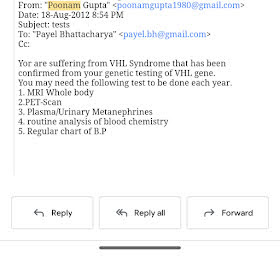Hence the growth of new blood vessels or angiogenesis is not so much a disease as a phenomenon, the result of a basic evolutionary compromise. As a body lives and grows, its cells are constantly dividing, copying their DNA — this vast genetic library — and bequeathing it to the daughter cells. They in turn pass it to their own progeny: copies of copies of copies. Along the way, errors inevitably occur. Most are random misprints.
Over the aeons, cells have developed complex mechanisms that identify and correct many of the glitches. But the process is not perfect, nor can it ever be. Mutations are the engine of evolution. Without them, we never would have evolved. The trade-off is that every so often a certain combination will give an individual cell too much power. It begins to evolve independently of the rest of the body. Like a new species thriving in an ecosystem. For that, there can be no easy fix.
Thus recovery or cure is a forlorn hope as this growth phenomenon exploits evolution, Darwinism. All we can do is increase longevity, thereby attempting to understand the phenomenology behind VHL and increase the efficacy of modern medical techniques. Increasing the outcome of the average lifetime has to be the motto not a baseless idea of eradicating.
A surgeon once told me he shall pray that nobody gets this fatal rare disease. Children get support chosen by the committee and the ministry are pediatric diseases and prevalent in children.
I was once a child since 16 days old my life is a struggle because I am not Benjamin Button. I grew up suffering all the time from a variety of symptoms and fatal diseases.
Currently, I have even approached the Delhi High Court asking for aid for my treatment and the case is under consideration.
Fundraising efforts are not working as there's less awareness.
Von Hippel-Lindau disease is a neurocutaneous syndrome. A neurocutaneous syndrome causes problems that affect the brain, spine, and nerves (neuro), and the skin (cutaneous).
In Von Hippel-Lindau disease, tumors most commonly develop in the brain and retina of the eyes. These tumors, called angiomas, consist of blood vessels. Other types of tumors develop in other organs and include tumors in the adrenal glands (pheochromocytomas) and cysts in the kidneys, liver, or pancreas. As people with the disorder age, the risk of developing kidney and pancreatic cancer increases. vHL patients battle a series of tumours. vHL gene is involved in many forms of cancer.








No comments:
Post a Comment